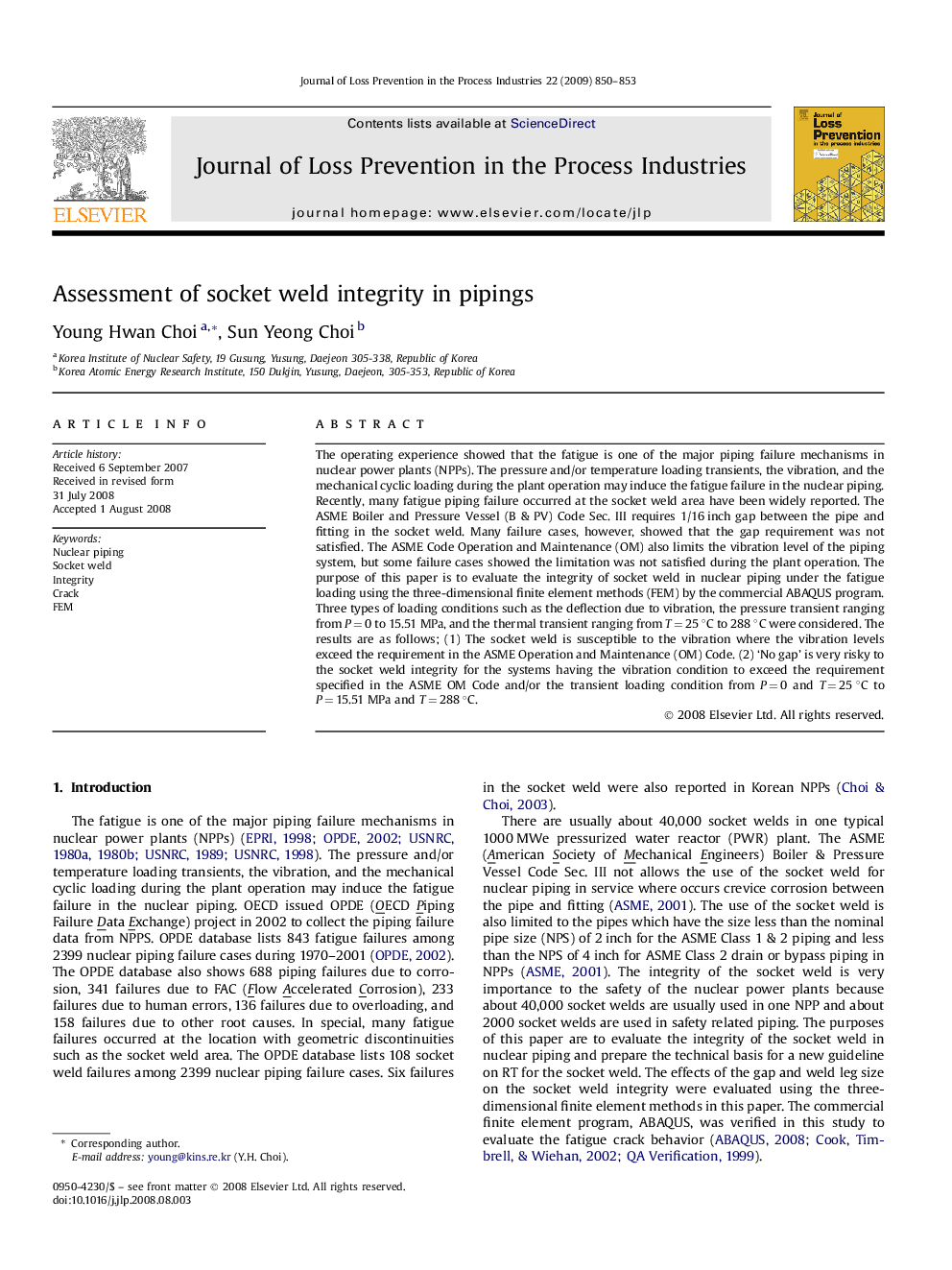| کد مقاله | کد نشریه | سال انتشار | مقاله انگلیسی | نسخه تمام متن |
|---|---|---|---|---|
| 586789 | 878231 | 2009 | 4 صفحه PDF | دانلود رایگان |

The operating experience showed that the fatigue is one of the major piping failure mechanisms in nuclear power plants (NPPs). The pressure and/or temperature loading transients, the vibration, and the mechanical cyclic loading during the plant operation may induce the fatigue failure in the nuclear piping. Recently, many fatigue piping failure occurred at the socket weld area have been widely reported. The ASME Boiler and Pressure Vessel (B & PV) Code Sec. III requires 1/16 inch gap between the pipe and fitting in the socket weld. Many failure cases, however, showed that the gap requirement was not satisfied. The ASME Code Operation and Maintenance (OM) also limits the vibration level of the piping system, but some failure cases showed the limitation was not satisfied during the plant operation. The purpose of this paper is to evaluate the integrity of socket weld in nuclear piping under the fatigue loading using the three-dimensional finite element methods (FEM) by the commercial ABAQUS program. Three types of loading conditions such as the deflection due to vibration, the pressure transient ranging from P = 0 to 15.51 MPa, and the thermal transient ranging from T = 25 °C to 288 °C were considered. The results are as follows; (1) The socket weld is susceptible to the vibration where the vibration levels exceed the requirement in the ASME Operation and Maintenance (OM) Code. (2) ‘No gap’ is very risky to the socket weld integrity for the systems having the vibration condition to exceed the requirement specified in the ASME OM Code and/or the transient loading condition from P = 0 and T = 25 °C to P = 15.51 MPa and T = 288 °C.
Journal: Journal of Loss Prevention in the Process Industries - Volume 22, Issue 6, November 2009, Pages 850–853